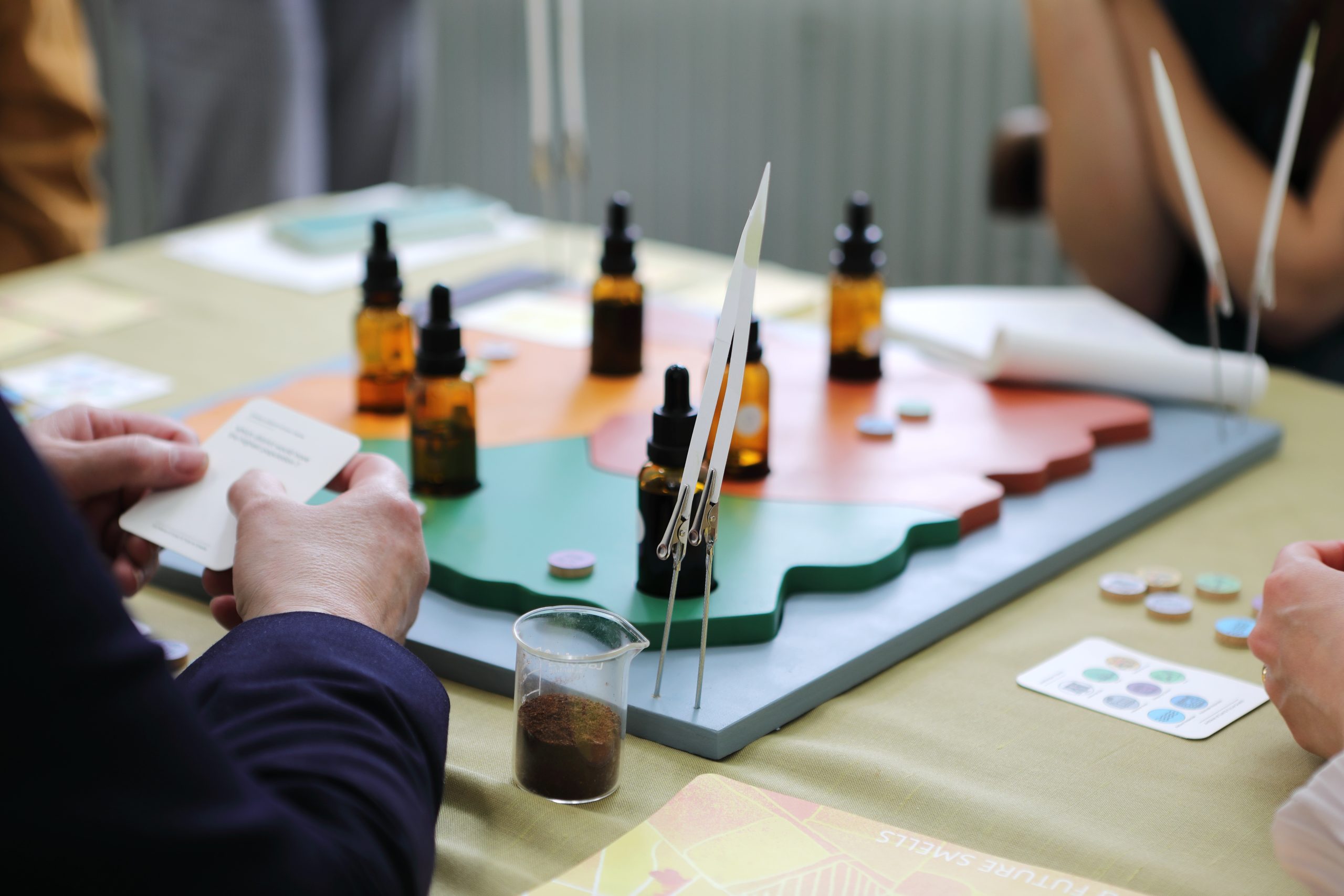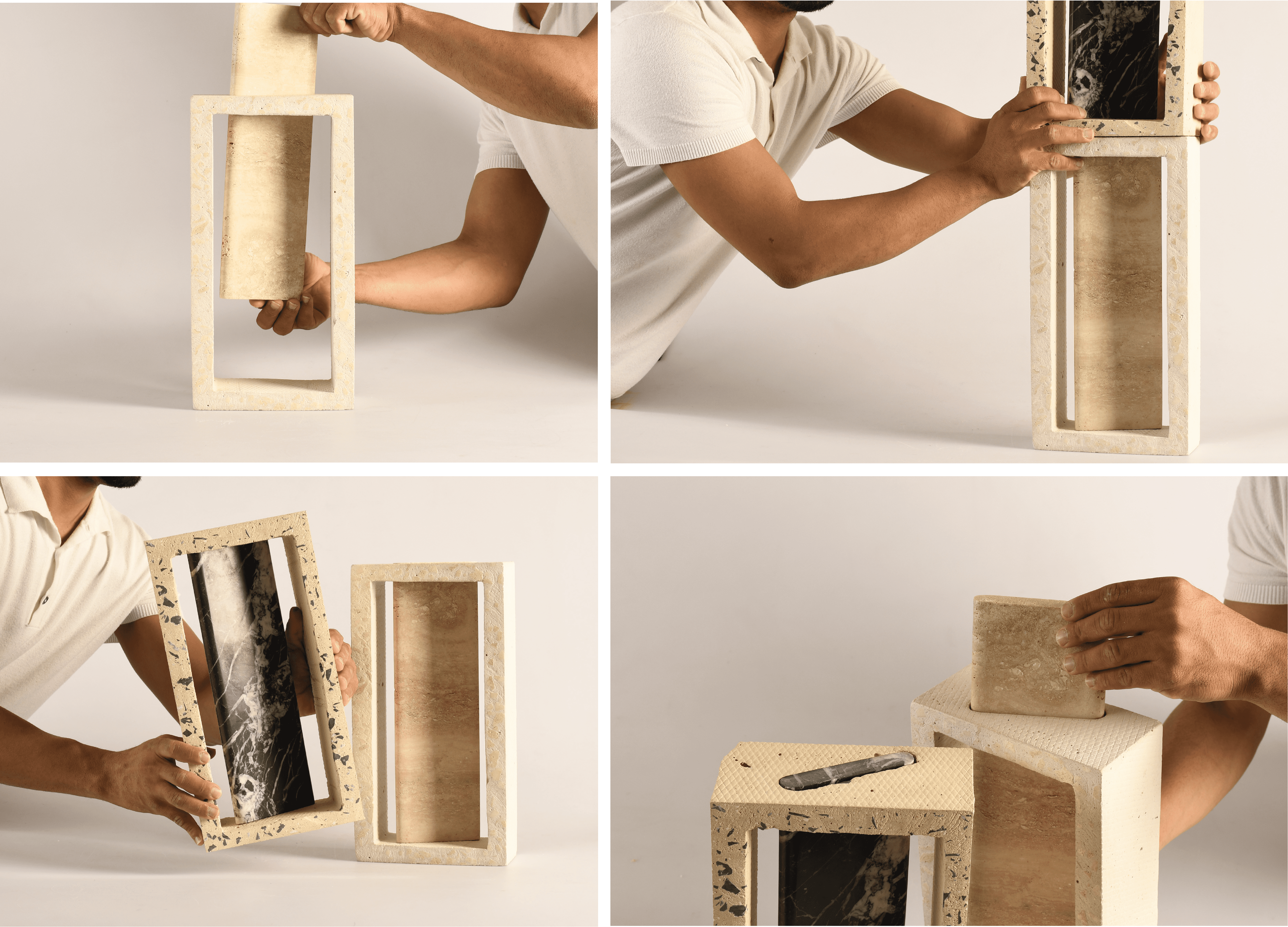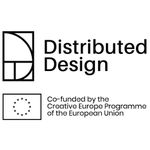In order to tackle the many societal and environmental problems at hand, designers have come up with creative and innovative solutions. Countless ideas and projects are being realized that could help us waste less, build regeneratively, use technology in an ethical manner, understand each other better, etc. However, upscaling these ideas to a level where they can make a broad societal impact, as well as sustaining the designers is difficult. In this article we would like to introduce you to some designers and their innovative projects that are trying to make a positive imprint on the world. Their ideas are in line with the values of distributed design: Open, Collaborative, Regenerative, and Ecosystemic. What challenges do they face, and what do they need to overcome these?
Are you interested to know more about this year’s Distributed Design creative talents?
Cemre Kara – Archives of Past and Future Smells
Cemre’s project is an immersive olfactory art project that delves into the evolving scentscapes of cities. The work explores urban design and climate crises concerning communities’ sensory perceptions, specifically focusing on the sense of smell. It evokes the idea of imagining the smells of yesterday, today, and tomorrow. The research involves gathering materials from various urban and suburban locations, using walking as a method to explore and understand the surrounding scents. These materials are then distilled to create a physical archive and serve as tools for performative outcomes, offering insights into the city’s environmental and cultural fabric.
‘Archives of Past and Future Smells’ embraces principles of sustainable, collaborative, and open design practices, fostering discussion and reflection on the olfactory aspects of our daily lives and our involvement in city planning for the future. It underscores the profound impact of environmental changes on our daily lives and cultural and natural heritage. Cemre aims to analyze how different smells are associated with various urban landscapes and use this data to generate AI-based 3D visualizations. These visuals will gather together an understanding of how smells influence our perception of city districts, addressing concepts such as safety, eco-friendliness, wealth, and infrastructure through sensory experiences.
Sam Gleeson – NIFE
Sam is an artist and craftsperson creating culinary knives for home and professional use. Being a former chef and furniture maker sparked his passion for working in a sustainable and circular manner, whether in the kitchen, workshop, or life. This approach led him to make NIFE a ’truly circular’ project, using recycled marine plastic and post-consumer and industrial waste. He believes that his project is not only a knife but a tool for social change to encourage informed choices and foster meaningful connections.
“NIFE supports a future Earth by turning waste into valuable resources and inspiring a commitment to environmental stewardship.”
With this project, Sam also emphasizes how NIFE inherently aligns with the Distributed Design Principles. Encouraging new thought processes on localized material re-use, collaborating with food-related spaces, finding effective use for marine plastics pollution, and building engagement with communities, he believes that the project can inform and educate, inspire, and provoke thought.
Adonis Evangelista – Biodegradable Vases
Adonis developed this project at the University of Porto, and in partnership with the florist Flores de Joaquim Santos, focusing on the problem of excessive use of plastic pots in horticulture, floriculture, and gardening. The research aims to develop practical and innovative solutions to reduce the environmental impact of plastic pot production by seeking sustainable alternatives. It proposes to use organic matter remnants from floriculture, restoration, and woodworking as raw materials for creating new plant containers. After following different phases of experimentation, production, and assessment, the team successfully produced functional and durable pots.
From the perspective of distributed design, the project showcases a collaborative and decentralized approach to addressing the environmental challenges posed by plastic waste. It also promotes a circular economy model, where waste is not only reduced but also reintegrated into the production cycle. Furthermore, their initiative supports the shift from a single industry to a collaborative network among various sectors, to enhance adaptability and resilience in production and resource management.
“The scalability of these alternatives aligns with Distributed Design Principles, offering a sustainable solution that can be adapted and expanded across industries, contributing to systemic change in waste management and product design.”
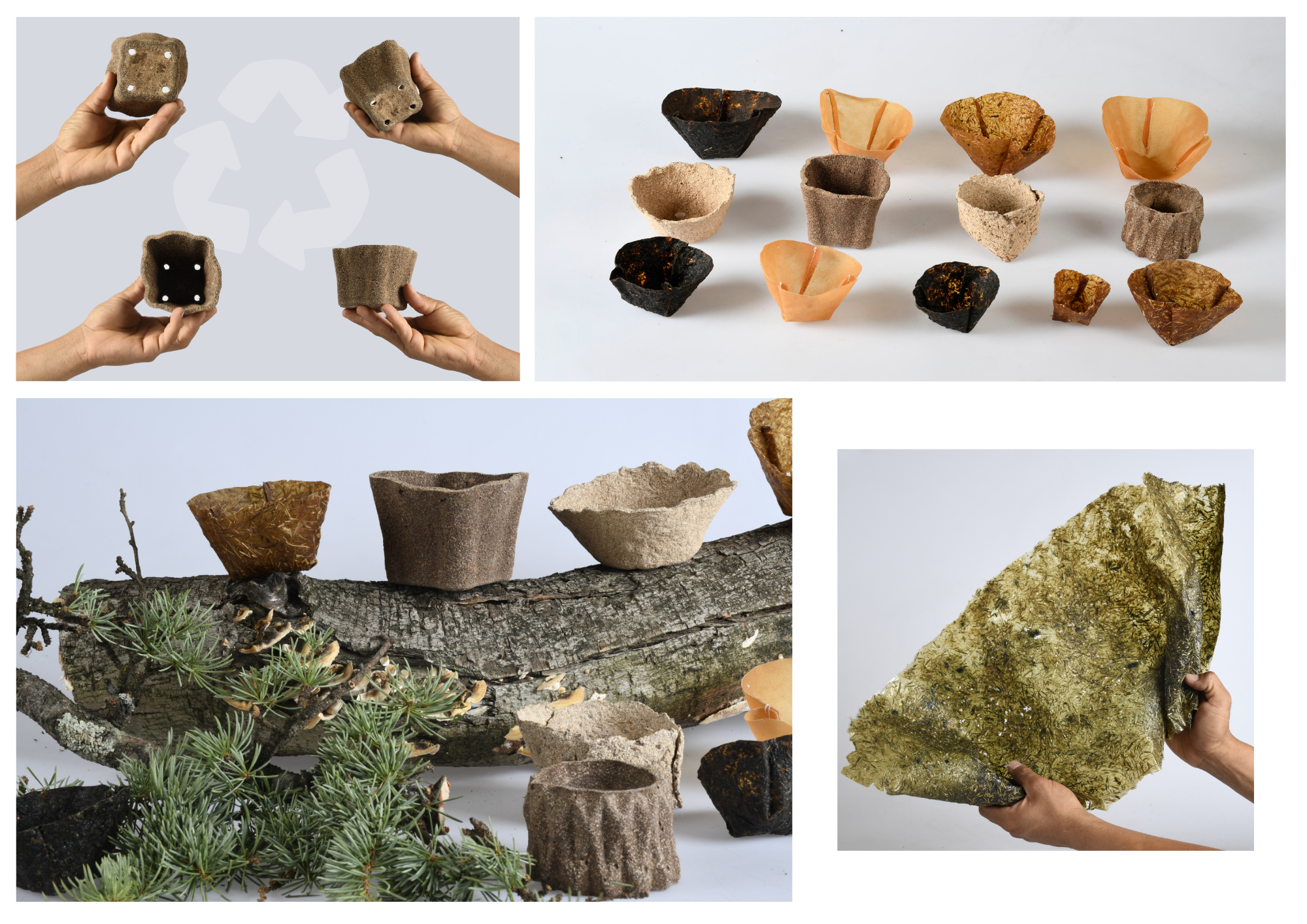
Adonis Evangelista – Bloco Cobogó
The second project by Adonis brings forward aspects of circular economy and industrial sustainability from the perspective of distributed design. By reusing marble waste discarded by TCC Whitestone, this project aims to promote the distribution of responsibility across the production chain. The waste from marble production is imagined to become part of a collective solution instead of solely the company’s problem. This decentralized approach to the production process seeks to show possibilities to other industries for adopting similar solutions.
With the idea of reusing up to 70% of waste materials in the production of new products, the project reinforces a circular production methodology and efficient use of resources. Furthermore, By integrating different stakeholders — from academia to the production sector — Bloco Cobogó encourages various parties to implement a more sustainable and resilient system. It exemplifies how following similar principles of Distributed Design can turn unused materials into valuable resources.
“The project represents a potential production approach which can be replicated across various industries, fostering efficiency and environmental responsibility.”
Mayra Deberg Alencar – Fragments of the Past – Building Waste as a Resource
Mayra’s project is a material research aimed at recovering construction and demolition waste (CDW) from an upcycling perspective in the Porto Metropolitan Area, Portugal. Waste produced by this construction industry accounts for around a third of all waste generated worldwide. The work is created from CDW, using glass, stones, bricks, and concrete, in combination with the dust produced when cutting granite stones and a small percentage of cement. This circular materiality of the project seeks to revive the history behind construction waste.
“The construction industry is one of the most polluting industries on the planet. As well as being responsible for considerable environmental, social and economic impacts, it generates effects at every stage of its production process.”
The project integrates different principles of distributed design, adopting an open, collaborative, and ecosystemic approach. Mayra shares the knowledge and techniques of transforming recycled aggregates in an accessible online document. This research aims to promote collaboration by integrating local facilities and communities in co-creation to raise awareness of waste recovery through product design. Using local resources, it implements a regenerative design process that reduces environmental impact and minimizes the extraction of raw materials. With the reusable molds and production techniques developed, she hopes to ensure that the knowledge generated is distributed, replicable, and scalable across regions and industries.
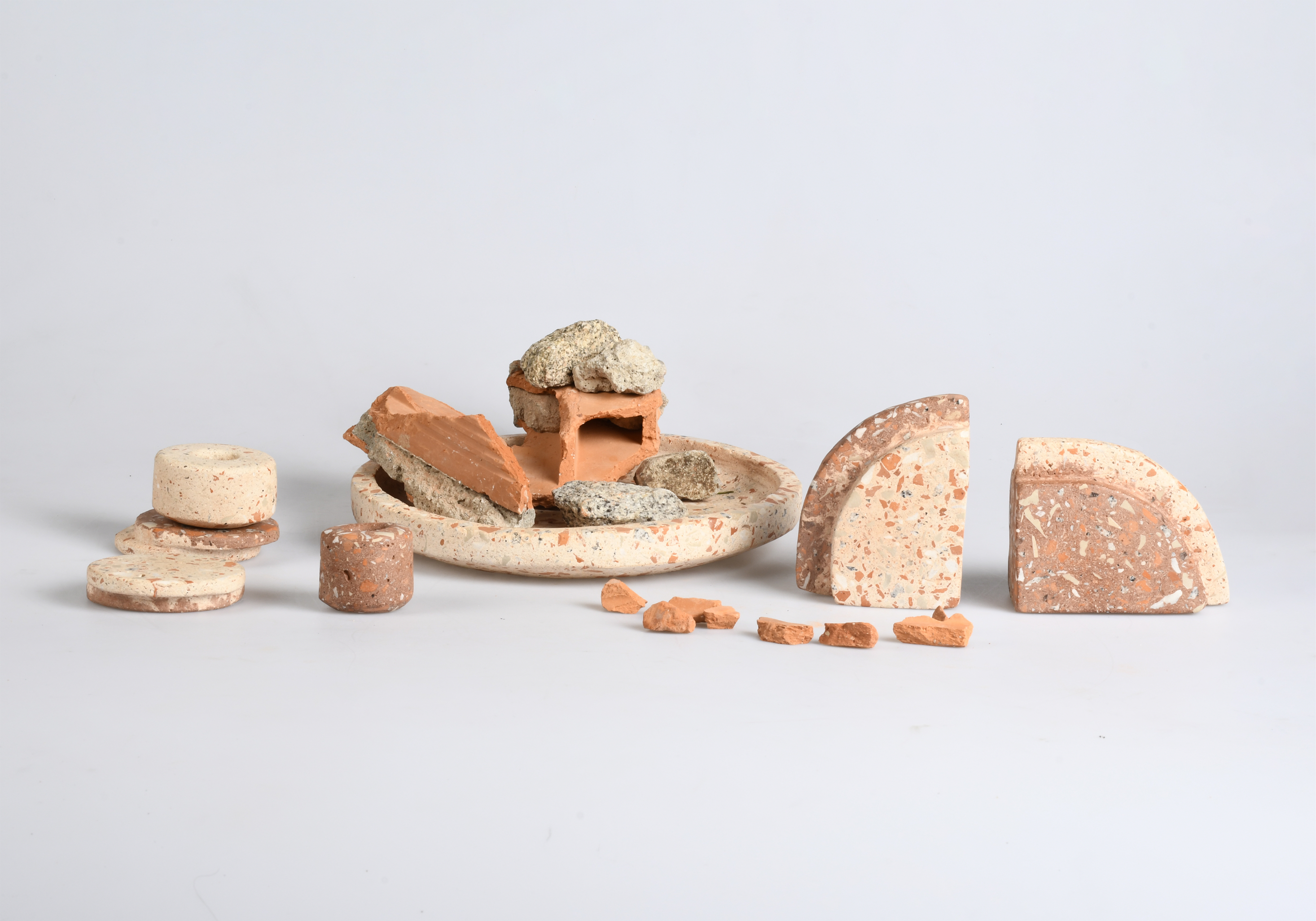
Anna Fedele – <body>, as body syntax
Anna’s project is a speculation on the actual translation of proximity interactions between two or more bodies into literal texts. It defines a dynamic structure, such as body language – a veritable semantic language. The work highlights how the perception of proximity between two bodies is subjective but also fleeting. Emphasizing, through the legitimacy of the written text and the precision of data, that some dynamics are not always visible and perceptible the moment they occur.
With this project, Anna focuses on speculation of a future in which wearable technology could play a fundamental role in human and social dynamics. And in this case, regarding gender violence. The underlying idea of the work is that it grows according to the subjectivity of people and their perspectives. From the point of view of wearability and properties that it can detect, it meets the needs or preferences of the subject who wears it and what is around them.
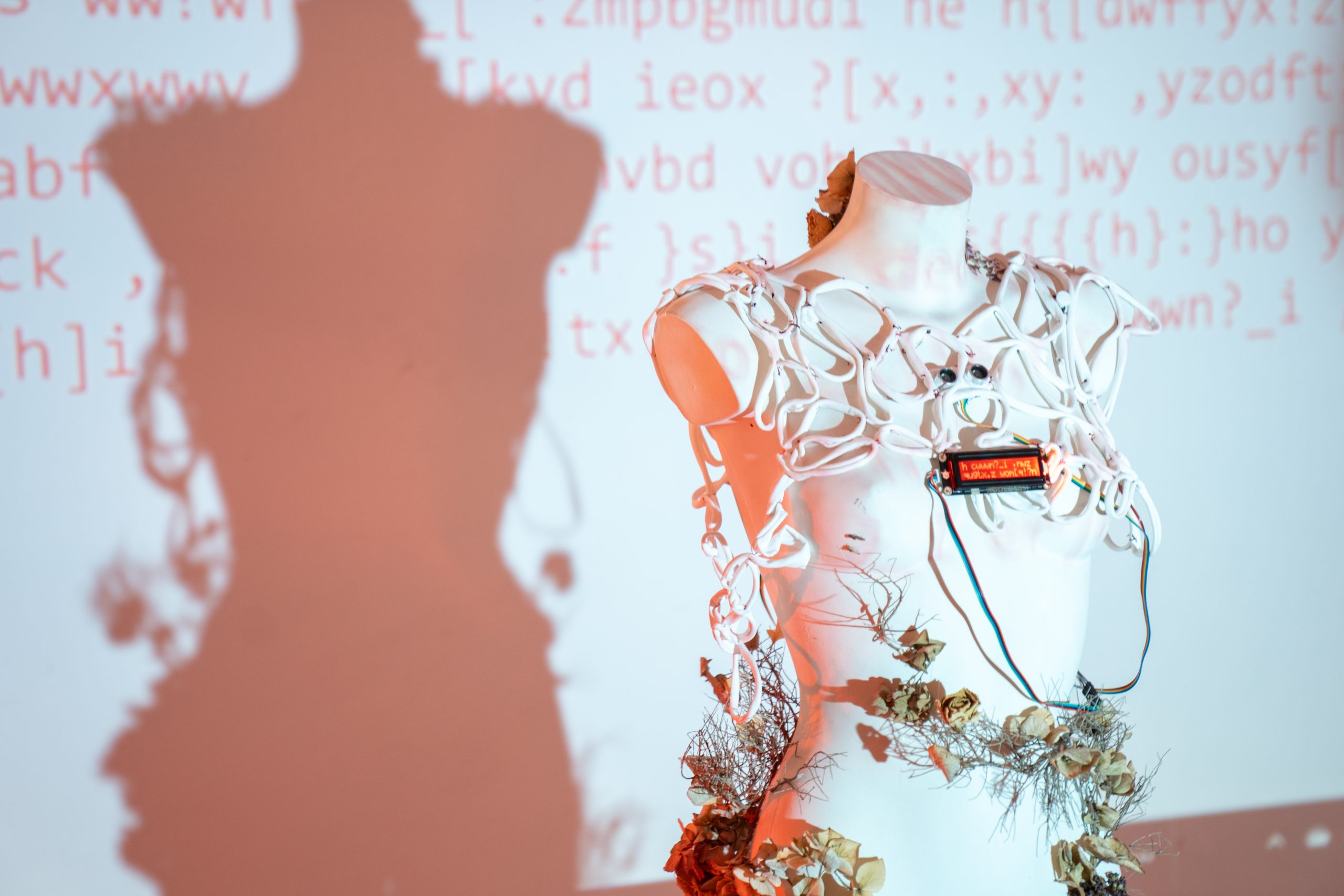
The majority of the designs described above use materials that would have been wasted otherwise. However, getting access to these kinds of waste materials can be hard with the way our world is currently organized. The global supply chains and cumbersome systems in place can complicate the mission of idealistic designers to get their ideas out there. There is a need for companies and consumers to shift their perspective on waste as being without value. These designers demonstrate that through creativity, upcycling, and smart use of technologies, what was once considered waste can become valuable and beautiful products. The hope is that we can find ways to learn from and support each other to give these distributed designs the attention and value they deserve.


